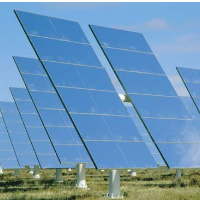Some Regional Utilities Are Struggling to Find Renewable Energy

As California races toward a 2020 deadline for its utilities to generate 33% of their electricity from renewable energy sources, some of them are badly lagging.
A report by the Union of Concerned Citizens (UCS) analyzed the state’s top 10 utilities, which provide about 25% of California’s electricity, and found a wide range of accomplishment. Three utilities were singled out as having gotten off to a “false start” based on how much renewable energy it procured by 2010, how long its purchasing commitment were, and whether they were buying new or existing renewable energy.
Burbank Water and Power, the smallest of the 10 utilities, was the worst of the 10. It had increased its Renewable Portfolio Standard (RPS) from .1% in 2003 to 7% in 2010, but that was far short of the 20% goal set for all utilities. RPS measures what percentage of retail electricity sales are from renewable sources. Burbank had negotiated a number of long-term contracts for renewable energy, but only some of its wind projects and one small hydroelectric project panned out.
Imperial Irrigation District actually suffered a dip in its renewable sources from 9.8% in 2003 to 8.3% in 2010. California’s sixth-largest utility (third-largest publicly-owned) not only missed the mark, it accomplished what little it did using projects it built from the 1930s to the 1980s.
Roseville Electric, which had an RPS of 7.9% in 2003, came close to attaining the 20% goal (17.5%) but was dinged by UCS for doing by contracting for relatively short three-year terms. Short contracts “will not help Roseville meet its future RPS obligations,” the report said.
Of the remaining seven utilities, three were deemed “sprinting ahead” and four were found to be “on the right track, but must keep moving.”
The sprinters were: Silicon Valley Power (25.7%), Turlock Irrigation District (21.3%) and Modesto Irrigation District (17.8%). Silicon Valley Power has a large commercial and industrial customer base and was an early, successful pursuer of long-term contracts.
The four utilities in the middle were: Los Angeles Department of Water and Power (20%), Sacramento Municipal Utility District (21%), Riverside Public Utilities (18.4%) and Anaheim Public Utilities (10.8%). Anaheim got credit for going after long-term commitments, but was burned when some of those projects did not materialize. Los Angeles DWP, the nation’s largest publicly-owned utility and California’s third-largest electric utility, received kudos for its seven long-term investments in wind power, but it was noted that nearly a third of its investments overall are short-term and don’t bode well for the future.
Overall, the 10 largest utilities increased their retail electricity sales from renewable energy sources to nearly 19% in 2010, up from 3% in 2003.
–Ken Broder
To Learn More:
UCS Report Gives Mixed Reviews to Sacramento Region Utilities (by Mark Glover, Sacramento Bee)
The Clean Energy Race: How Do California's Public Utilities Measure Up? (Union of Concerned Scientists)
- Top Stories
- Controversies
- Where is the Money Going?
- California and the Nation
- Appointments and Resignations
- Unusual News
- Latest News
- California Forbids U.S. Immigration Agents from Pretending to be Police
- California Lawmakers Urged to Strip “Self-Dealing” Tax Board of Its Duties
- Big Oil’s Grip on California
- Santa Cruz Police See Homeland Security Betrayal in Use of Gang Roundup as Cover for Immigration Raid
- Oil Companies Face Deadline to Stop Polluting California Groundwater





